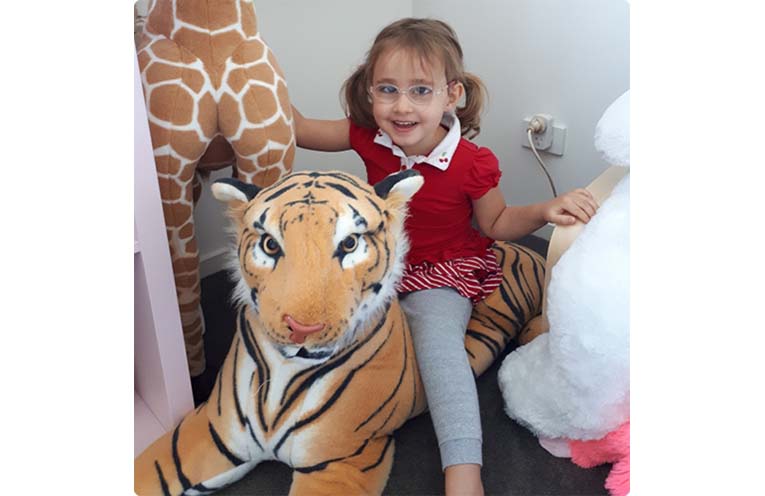
A fundraising vehicle of the Children’s Medical Research Institute, the day highlights genetic research into childhood diseases.
The Children’s Medical Research Institute marks 65 years’ existence this year.
 Advertise with News of The Area today.
Advertise with News of The Area today.It’s worth it for your business.
Message us.
Phone us – (02) 4981 8882.
Email us – media@newsofthearea.com.au
Its mission remains the same: “no child’s life should be cut short. We will do all within our power to change ‘incurable’ to ‘curable’.”
It is through stories such as Anita, Mathew and Amelia’s that the true magnitude of the institute’s work and how it translates into the general community can be appreciated.
When her only child was diagnosed with a genetic eye condition mum, Anita, described the emotions as like “going through the stage of grief, watching your blind child grow up in a sighted world’’.
It was when Amelia was three months old that her parents, Anita and Mathew, were told by their family doctor that her eyes weren’t following movement around the room. She was sent for further testing, and by six months old, they got the news that Amelia had Leber’s congenital amaurosis which would leave her with very little vision.
“I cried for a week, a full week,’’ Anita said.
“I remember night and day, I cried, wondering what the future of my child was going to be like? How is she going to walk? How is she going to stay safe and not get hit by a car?’’
Seven years later, life is a lot brighter for Amelia.
She is a talented pianist who learns songs easily after only a couple of listens.
She has won awards for her brilliance at mastering Braille and is progressing well at school with both sport and academics.
Amelia walks with a cane and it is only now that she’s older that her parents can assess what she is and isn’t able to see.
“I can stand directly in front of her and she walks right past me,” said Anita.
It’s still really difficult to watch, breaks my heart every time. You never get used to it,’’ she said.
One thing that changed Anita’s perspective was discovering that Professor Robyn Jamieson at Children’s Medical Research Institute had been involved in Australia’s first-ever gene therapy for an inherited eye disease and there was work being done for other conditions.
“Our team is involved in new therapy and clinical trials for genetic eye disorders, and there have been some great outcomes that give us impetus and hope for our future efforts,’’ Professor Jamieson said.
“This research can make a real difference to people,” she said, “my hope is that we can make a positive difference in the lives of many more people’’
.Anita said it was “beyond exciting’’ to go into the labs and hear from Professor Jamieson about her team’s work and urged all Australians to support their research.
“You never think it’s going to happen to you ever,” she said.
“It’s always something that happens to someone else – but it could happen, and research is really important to support because it can make a really big difference in the lives of those that are affected and those around us.”
JEANS for Genes Day is being marked on Friday (August 4).